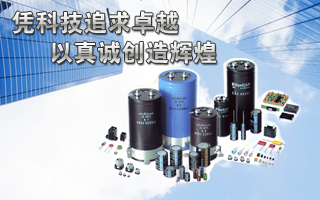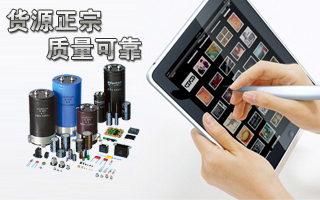-
在技术信息库中刊登了「安心安全的分散型电源以及其应用」。
Applications of Distributed Power Sources, a Means of Energy Security
Based on its management philosophy of contributing to a bright future society by creating valuable products while protecting the environment, Nichicon strives to create products in the environment and energy fields and contribute to the realization of a low-carbon society. To this end, on November 21, 2013, we launched the NECST (Nichicon Energy Control System Technology) Business Headquarters. Our target is sales of 100 billion yen in NECST products in fiscal 2018.
Let’s look at a distributed power source combining solar power generation and a lithium-ion battery for use in emergency shelters, as well as an application of such a power source in an agricultural charging station.
During the Great East Japan Earthquake of March 2011, long blackouts caused major difficulties for life in emergency shelters. The hardships faced during that time are still fresh in the mind of the evacuees. With the lessons learned from this experience, the Japanese government has budgeted reconstruction funds to equip emergency shelters in the Tohoku region with independent distributed power sources. Installation has begun in some locations.
Nichicon made use of its years of experience in power storage technology and electricity conversion technology to early on develop a distributed power source combining solar power generation and a lithium-ion battery. This system has been installed at numerous facilities, including the Komekurayama Mega-Solar Power Plant in Yamanashi Prefecture, Japan. This experience made it possible for us to develop a product lineup of high cost-performance distributed power sources for emergency shelters that have been installed in multiple locations. Below are the system specifications and a photograph.
Table 1: Specifications of distributed power source
Photo 1: Distributed power source for emergency shelters
This distributed power source can store electricity generated by solar power in a storage battery, and it can connect to the grid to supply it with solar-power-generated electricity. During normal operation it has functions for peak-time shifts and reduction of peak load that reduce the amount of power needed from the grid. This means that the distributed power source goes beyond its intended use of providing electricity independent of the power grid; it is in fact an intelligent system with a range of functions that meet the needs of numerous energy provision situations. This distributed power source comes in a choice of 10-kW and 20-kW converter capacities to meet the size needs of emergency shelters, and a choice of indoor and outdoor units for greater freedom of installation.
The aforementioned distributed power source can also be used as an agricultural charging station. Nichicon has formed a consortium along with Mitsubishi Motors Corporation under which it is conducting empirical research on agricultural energy management through the use of a combined charging station for electric vehicles (EVs) and agricultural facilities. It is one of the empirical research projects under Japan’s Ministry of Agriculture, Forestry and Fisheries (MAFF) aimed at using untapped energy in rural areas. The research project uses the Smart Agricultural Network System shown in photos 2 and 3. The system consists of an agricultural charging station, electric vehicles, and portable electric power feeds. Solar-power-generated energy is stored in a lithium-ion battery, and this can be used, independent of the grid, for rapid charging of EVs. The EVs can in turn take this energy and provide it, via an electric power feed, to facilities such as greenhouses.
In the event that power from the grid is cut off because of a natural disaster, the system can still charge EVs, and the electric power feeds can be used to provide emergency power to agricultural machinery and greenhouses.
With this agricultural charging station, the use of untapped renewable energy can contribute to the realization of greater agricultural mechanization. Other advantages are an IT network that keeps track of the power generation and power storage status, more efficient energy management, and ultimately local energy production for local consumption. Japan’s agricultural sector must waste no time in modernizing in advance of the Trans-Pacific Partnership (TPP) free-trade agreement. The country must make its agricultural sector more competitive, and to this end there are high hopes for this Smart Agricultural Network System.This constitutes an industry comprised of the primary industry of farming, the secondary industry of manufacturing, and the third industry of Information Technology (IT). This opportune system has been widely lauded and was recently awarded the Semi-Grand Prix in the CEATEC AWARD 2013 at CEATEC, one of the world’s major trade shows for the IT and electronics industries.
Photo 2: A set-up of the Smart Agricultural Network System
Photo 3: The distributed power source equipment for the Smart Agricultural Network System
With the lessons learned from the Great East Japan Earthquake, Japan is hurrying to equip emergency shelters with distributed power sources combining solar power generation and power storage functions.These are being eagerly awaited around the country as systems to ensure energy provision for the safety and well-being of its citizens. Meanwhile, with the impending signing of the TPP free-trade agreement, Japan’s agricultural sector is urged to become more competitive. It is believed that a system combining an agricultural charging station, EVs, and portable electric power feeds can contribute to greater mechanization of agriculture. Distributed power sources can be used for emergency power during disasters such as earthquakes, and they hold promise in future infrastructure as a means of reducing CO2 emissions and providing power in a range of applications. It is hoped that by building such an infrastructure and boosting the competitiveness of Japan’s agriculture, we can come closer to realizing a society with dramatically reduced carbon emissions and greater energy security.
In the spirit of our management philosophy, we hope that by creating valuable products that solve society’s problems—products that generate new business and open up new markets—we can contribute to a society with a bright future.
NICHICON CORPORATION
From the Japan Electrical Manufacturers' Association Magazine "Denki"
No.768, Feb., 2014
[End of document]
上海利祥电子产品有限公司
地址:上海市宝山区陆翔路111弄绿地公园广场6号楼903
电话:021-55802482 021-66032383
地址:上海市宝山区陆翔路111弄绿地公园广场6号楼903
电话:021-55802482 021-66032383


